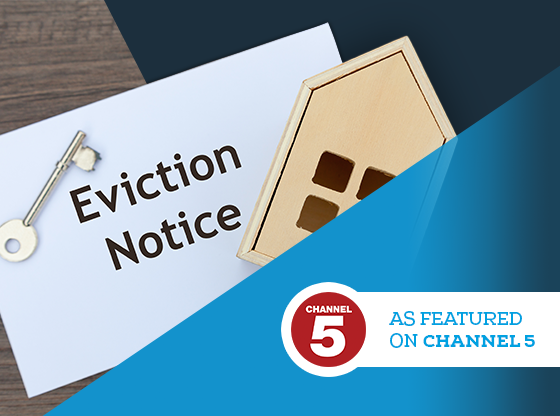Terminating a Tenancy After the Death of the Tenant
How do you deal with Terminating a Tenancy After the Death of the Tenant?
When a tenant dies, the assured shorthold tenancy agreement does not automatically end.
The tenancy is transferred temporarily to the Public Trustee if a tenant dies:
- without a will
- with a will but without an executor
If the deceased tenant has left a will, the tenancy will vest in his executors. If he has died intestate, the tenancy vests in the Public Trustee (Administration of Estates Act 1925).
There is often confusion as to what notice should be served to seek possession of the property when a sole tenant dies.
How to Claim Possession of the Property
You must:
- Serve notice on the Personal Representative of the deceased tenant.
- Serve a copy of the notice and completed the NL1 form to the Public Trustee.
- Seek for the Personal Representative of the deceased tenant to surrender the tenancy.
- Seek an Order for Possession of the property, where the tenancy is not surrendered.
- Obtain a warrant or writ for possession to enforce the Order for Possession.
- Serve a notice under the Torts (Interference with Goods) Act 1977 on the Personal Representative of the deceased tenant in relation to any uncollected possession left at the property before disposing of any of the deceased tenant’s possessions.
Serving Notice
Section 18 of the Law of Property. (Miscellaneous Provisions) Act 1994 sets out the method of service after death for notices that affect land interests:
(1) A notice affecting land which would have been authorised or required to be served on a person but for his death shall be sufficiently served before a grant of representation has been filed if—
(a) it is addressed to “The Personal Representatives of” the deceased (naming him) and left at or sent by post to his last known place of residence or business in the United Kingdom, and
(b) a copy of it, similarly addressed, is served on the Public Trustee.
The notice should be addressed to “The Personal Representative of [full name of the tenant who died] of [last known address for the tenant who died]”.
A copy the notice and NL1 form must be served on the Public Trustee, it should also be served on The Personal Representative of the tenant who has died.
Order an NL1 application form to register notice from Landlord Advice UK, OyezStore or from Shaws. The form usually costs no more than £10.
Method of service
When a tenant dies the tenancy forms part of their estate and it vests in the Public Trustee until the grant of administration or representation (the granting of probate), as per section 9 of the Administration of Estates Act 1925, and section 14 of the Law of Property (Miscellaneous Provisions) Act 1994.
In accordance with section 14 of the 1994 Act, the vesting of the tenancy in the Public Trustee does not actually confer any beneficial interest in the tenancy, nor does it create any obligation or liability. It is purely for the purpose of performing administrative functions to receive and record information. In other words, the administrator or executor of the estate does not become the tenant and therefore does not have personal liability to pay the rent or comply with the terms of the tenancy.
It must be stressed that before the grant of probate, for a notice to be validly served, it must be served on both the deceased and the Public Trustee. Service on just one recipient will not be sufficient.
What notice should be served?
This guidance applies to assured shorthold tenancy only. The appropriate notice(s) to serve when a sole tenant dies is therefore a notice under section 8 of the Housing Act 1988, citing ground 7 of Schedule 2 to the Housing Act 1988.
It is also possible to seek possession of the property by way of a notice to quit as has been the case in a wide range of cases, such as Pavey v London Borough of Hackney (unreported) 21 November 2017.
Where an assured or secure tenant dies, the statutory security of tenure is lost (because the tenant is no longer occupying the property as their only or principal home – s.81, Housing Act 1985; s.1, Housing Act 1988) but the contractual tenancy will remain in existence.
Likewise, when a tenant of an assured shorthold tenancy dies, they are no longer occupying the property as their only or principal home. An assured shorthold tenancy is a type of assured tenancy. All the requirements of an assured tenancy apply, including that it must be a tenancy of a dwelling-house let as a separate dwelling to an individual, who is a sole or joint tenant, where the tenant or at least one of the joint tenants occupies the house as their only or principal home.
Therefore, when a tenant of an assured shorthold tenancy dies, the statutory security of tenure of lost, but the contractual tenancy continues to exist. This is the basis upon which a notice to quit would be used to seek possession of the property in such circumstances.
Planning Ahead
Where a sole tenant has died, the landlord should immediately make contact with the tenant’s next of kin, or where this is not known, make enquiries to get in contact with the deceased tenant’s next of kin.
This will assist in identifying whether the tenant died intestate, or whether there is an executor of the tenant’s estate. This is important, as it determines who any notice seeking possession of the property should be served on.
You can obtain free legal advice from the Probate Legal Advice.










